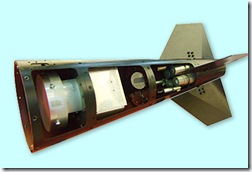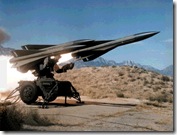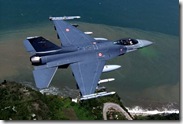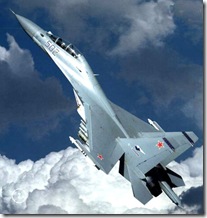Turkish JDAM-class weapons: Expanded threat for Greek air defenses
 The Hellenic Defense site reports that the Turkish Defense R&D Institute (SAGE) has unveiled a wholly made-in-Turkey tail-mounted guidance kit for unguided bombs, very similar to the US JDAM family. The kit, called HGK (Hassas Gudum Kiti) is initially designed for Mk84 bombs, but a version for Mk82 is reportedly under development.
The Hellenic Defense site reports that the Turkish Defense R&D Institute (SAGE) has unveiled a wholly made-in-Turkey tail-mounted guidance kit for unguided bombs, very similar to the US JDAM family. The kit, called HGK (Hassas Gudum Kiti) is initially designed for Mk84 bombs, but a version for Mk82 is reportedly under development.
As reported in IDEF 2009, HGK-fitted bombs are already in service with THK [Turkish Air Force] F-4E Phantom II aircraft, although it is more likely that the upgraded F-4E/2020 Terminator is employed. SAGE representatives did not clarify whether the weapons are in use by THK F-16C/Ds, but since HGK is compatible with the MIL-STD 1760 data bus, integration on that aircraft is possible.
Performance wise:
HGK combines an INS and GPS receiver; SAGE claims a “better than 10m” CEP when using both. If no GPS signal is available, accuracy drops to a 25m CEP. In comparison, JDAM is claimed to have a 8-10m CEP [although much higher accuracy has been demonstrated in tests].
 It is hard to overestimate the threat that this development presents to Greek air defenses. With the exception of a handful of Patriot & S-300 batteries, the bulk of ground-based air defenses in Greece comprise of MR-SAM systems (I-HAWK) and a wide plethora of (V)SHORADS systems, both radar- and IR-guided. While very capable against an attacking force that is using either unguided weapons or EO/laser-guided munitions (and thus has to enter the engagement envelopes of said terminal defenses), these systems are wholly ineffectual if the attacking aircraft can toss JDAM-class weapons from high altitude at stand-off ranges, virtually untouchable to the majority of air defenses, and still achieve LGB-like accuracy levels.
It is hard to overestimate the threat that this development presents to Greek air defenses. With the exception of a handful of Patriot & S-300 batteries, the bulk of ground-based air defenses in Greece comprise of MR-SAM systems (I-HAWK) and a wide plethora of (V)SHORADS systems, both radar- and IR-guided. While very capable against an attacking force that is using either unguided weapons or EO/laser-guided munitions (and thus has to enter the engagement envelopes of said terminal defenses), these systems are wholly ineffectual if the attacking aircraft can toss JDAM-class weapons from high altitude at stand-off ranges, virtually untouchable to the majority of air defenses, and still achieve LGB-like accuracy levels.
 Typically, the sale of advanced A-G munitions from western industries to Greece and Turkey is tightly controlled in numbers precisely because of the destabilizing potential of these weapons. As a result, limited numbers as well as a relative numerical balance in the PGM inventories of both air forces is the norm. In this case, however, there is nothing to stop the THK from procuring massive numbers of this guidance kit to transform the majority of its Mk80-series stocks into all-weather, stand-off precision-strike weapons. For the first time, the THK will have the ability to strike a great number of fixed targets in Greece under any weather conditions without suffering severe losses – not just on Day-1, but throughout the duration of any foreseeable conflict.
Typically, the sale of advanced A-G munitions from western industries to Greece and Turkey is tightly controlled in numbers precisely because of the destabilizing potential of these weapons. As a result, limited numbers as well as a relative numerical balance in the PGM inventories of both air forces is the norm. In this case, however, there is nothing to stop the THK from procuring massive numbers of this guidance kit to transform the majority of its Mk80-series stocks into all-weather, stand-off precision-strike weapons. For the first time, the THK will have the ability to strike a great number of fixed targets in Greece under any weather conditions without suffering severe losses – not just on Day-1, but throughout the duration of any foreseeable conflict.
Combined with the ongoing acquisition of long-range precision weapons (Popeye, SLAM-ER, JSOW, Harpy) which pose a critical threat to Greek LR-SAM systems and primary C4I nodes, as well as the projected procurement of advanced strike-optimized aircraft (F-35), the overall threat of massive neutralization of Greek air defenses by a concentrated THK offensive is rapidly expanding.
Flanker aerodynamics: Irrelevant?
 Steve Trimble has an interesting interview with a LockMart test pilot who puts the awesome aerodynamic prowess often exhibited by the Sukhoi Flanker family into the context of actual WVR combat.
Steve Trimble has an interesting interview with a LockMart test pilot who puts the awesome aerodynamic prowess often exhibited by the Sukhoi Flanker family into the context of actual WVR combat.
Naturally, now that the (aerodynamically supreme) F-22 is practically a “dead” project and the market spotlight is on the F-35, LM goes to great lengths to argue that the JSF’s aerodynamic deficiencies don’t matter.
As one might expect, the comments on that post quickly degenerated to the typical “great airshow stuff, irrelevant in combat”.
Quick quiz: How many AMRAAMs did that Serbian MiG-29 in Kosovo ‘99 successfully dodge before finally running out of altitude, airspeed and ideas? 3-4 is the prevalent estimate. Want to guess how many shots a JSF would be able to aero-avoid in an identical situation? (Not counting DECM; you can backfit jammers on an aircraft, but the maneuverability is built-in).
 People who diss the Cobra (and Hook, and Bell, and Tailslide, and Kulbit, and…) as pure airshow gimmicks are missing the larger point. The Russians didn’t spend $7 billion (R&D) on an airframe just to show off at Le Bourget and Farnborough.
People who diss the Cobra (and Hook, and Bell, and Tailslide, and Kulbit, and…) as pure airshow gimmicks are missing the larger point. The Russians didn’t spend $7 billion (R&D) on an airframe just to show off at Le Bourget and Farnborough.
Are these maneuvers applicable in combat? Mostly not. (I say “mostly” because under certain circumstances the Cobra can be a neat card to play, albeit a one-shot affair).
BUT: Being able to do these stunts at an airshow means that, in real combat, you can do maneuvers that the adversary simply can’t follow you through – and dictate the pace of the battle. The Cobra (& friends) may not in themselves be applicable, but the attributes that enable them (superb aerodynamics, high T/W ratio, highly capable flight-control systems, engines that tolerate a wide range of airflow & AoA conditions etc.) are welcome in any fighter pilot’s list of priorities.
The USAF & USN may casually score off the Flanker stunts as “airshow gimmicks” – but when push comes to shove and the choice comes down between the “efficient AAM truck” (e.g. Crusader-III, F6D Missileer, F-111B, F-23) and the “aero supremo” (F-4, F-14, F-15, F-16, F/A-18, F-22) guess which one gets picked? Time and time again, the air services display their tacit recognition of the importance of aerodynamic performance.
As for the oft-quoted argument that the airshow maneuvers are only made possible by unrealistic light load: During the ‘96 Farnborough show, the Su-30MK demonstrator performed a full aerobatic routine with a full 8-ton weapons load. Likewise, the F-22 is reportedly able to execute a supersonic break-off even with a full internal AAM load.
Irrelevant? Nobody has yet to pick the AAM truck over the aero champ. Actions speak louder than words.
IMINT & Analysis: Nuclear N.Korea
 SOC has published a detailed photographic analysis of North Korea’s nuclear infrastructure.
SOC has published a detailed photographic analysis of North Korea’s nuclear infrastructure.
Once again, the DPRK has become an area of focus for intelligence analysts and politicians as the next course of action for the West is determined. While it remains to be seen whether or not tensions between the DPRK, its southern neighbor, and the rest of the world will be mitigated, one fact remains: the DPRK is developing a nuclear arsenal.
As always, top-notch work by SOC; a highly recommended read.
Pakistan is accelerating its nuclear weapons program

Wired reports that Pakistan seems to be stepping up its program for manufacturing more nuclear devices; and additionally, it is ramping up efforts to produce more efficient thermonuclear warheads.
Ramping up these nuclear facilities, ISIS notes, is “likely linked to a strategic decision to improve the destructiveness and deliverability of its nuclear arsenal.” Take, for instance, the focus on plutonium production: A plutonium fission device can be used as the “primary” (i.e., as the trigger) for a staged weapon that would set off a thermonuclear “secondary.” That’s scary enough; but equally troubling is the potential vulnerability of these nuclear sites.
Heron UAV in US service
Steve Trimble reports the appearance of the Israeli Heron UAV apparently on counter-drug assignment in El Salvador.
A version of the Heron called the "Heron 2" lost a huge US Army contract competition in 2004. It was called the extended range/multipurpose (ERMP) UAV program. The army picked the General Atomics Aeronautical Systems Inc’s Sky Warrior, a UAV that falls between the Predator and the Reaper in capability.
The new SOUTHCOM experiment begs the question: Could the Heron re-emerge as a contender to join the US military’s inventory?





